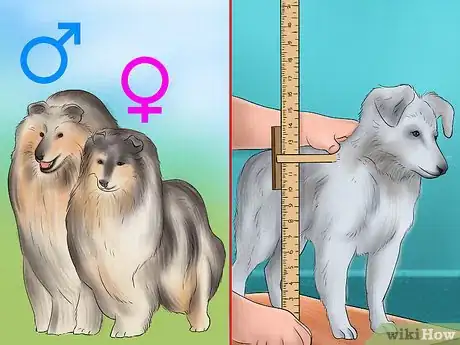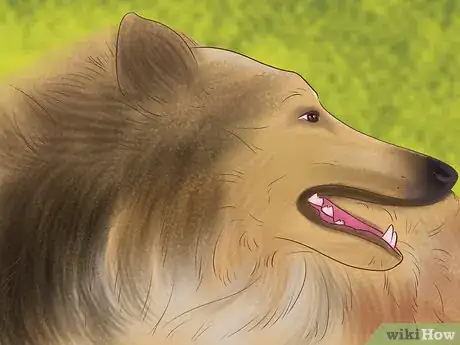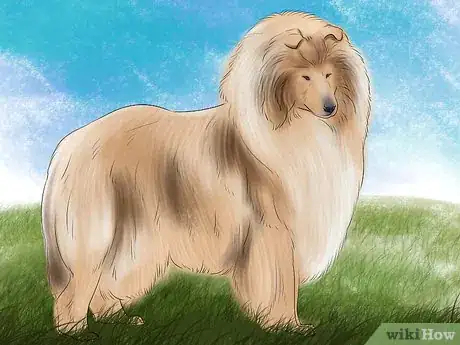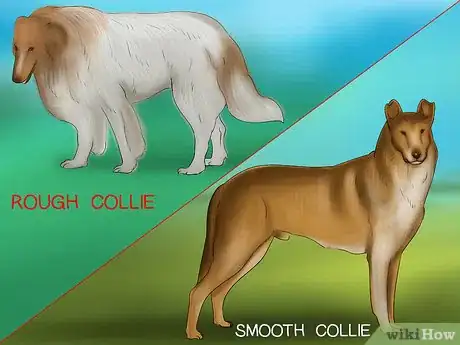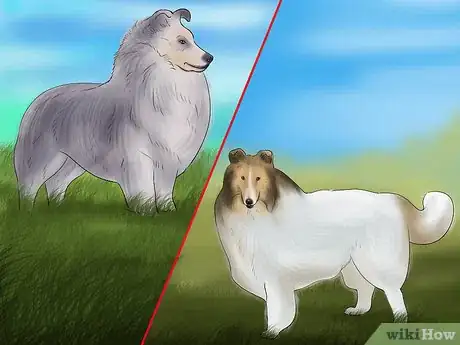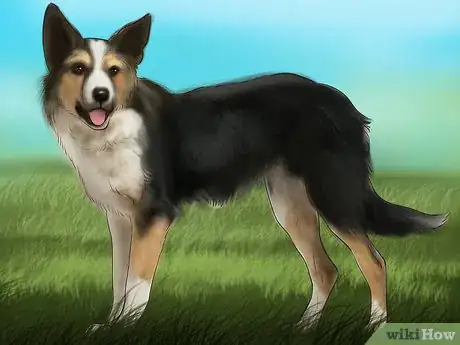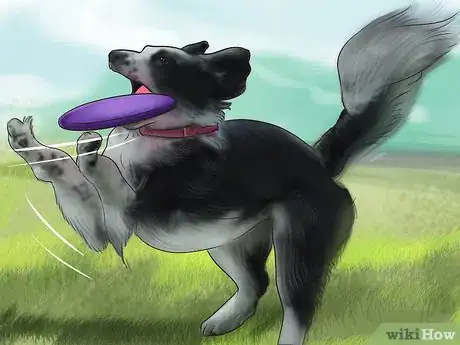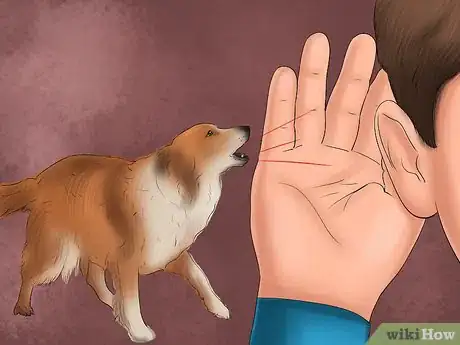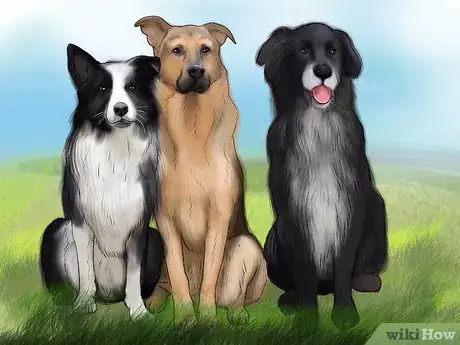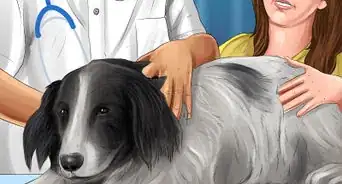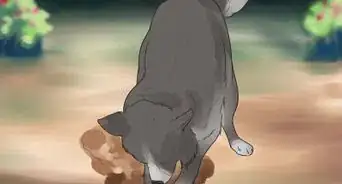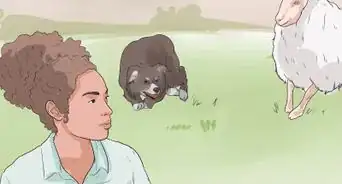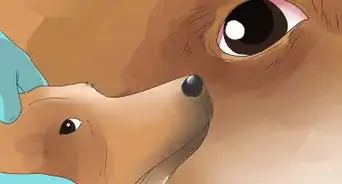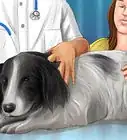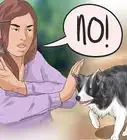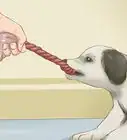This article was co-authored by Corinna Bhasin. Corinna Bhasin is a Dog Behavior & Training Expert, as well as the Owner of LovePup Training and Care LLC. She specializes in reward-based dog training that is customized to each dog’s personality and needs. She’s a Certified Dog Trainer (CDT) and holds a Master’s Degree from Johnson and Wales University and a Bachelor’s Degree from Nanyang Technological University in Singapore.
This article has been viewed 34,177 times.
Rough and Smooth Collies are native to Scotland and are often used as herding dogs in the Highland regions. This dog breed is sensitive and intelligent, making for a great family companion. Collies are considered one breed, but they have ten different color variations and two different types of coats.[1] You can identify a Rough or Smooth Collie by looking at the size and shape of the dog as well as her coat and her coloring. Collies also have distinct behaviors and personalities so you should observe these details as well to confirm the breed.
Steps
Looking at the Size and Shape of the Dog
-
1Check if the dog is medium-sized. Collies are considered medium-sized dogs, with forelegs and hind legs that are shorter than larger dogs. Female Collies can range from 22 to 24 inches (56 to 61 cm) and male Collies can range to 24 to 26 inches (61 to 66 cm) when they are full grown.[2]
- Female Collies are often smaller than males and tend to weigh 50–70 pounds (23–32 kg). Male Collies can weigh 55–90 pounds (25–41 kg).
-
2Look at the shape of the dog’s head. Collies have a distinct head shape. Their heads will appear in the shape of a wedge or a triangle when you face them straight on. Their heads may appear a little smaller than their bodies, and will be covered in a thick coat of fur.[3]
- Collies are known for their intelligent, piercing eyes and refined-looking head, known as the “Collie expression.”[4]
Advertisement -
3Notice their well-proportioned body. Collies will have a body that is long and well-proportioned. They will have a deep, wide chest and sloping shoulders. Their hocks, or legs, will be muscular to indicate speed and grace.[5]
- As herding dogs, Collies are built to be strong and firm. They are known for their ability to run and move with dexterity.
Checking the Coat and Coloring of the Dog
-
1Look at the texture and length of the dog’s coat. Collies come in two different varieties, the Rough Collie and the Smooth Collie. The coat of the Smooth Collie is short, dense, and flat. The Rough Collie has a long, well-fitted coat that feels a bit more harsh. The Rough Collie has a thick long coat all over it body, save its head and legs.[6]
- Both varieties have a soft, profuse undercoat.
- Keep in mind in the United States, many breeders will cross the two varieties together. But in England, the two varieties are considered separate breeds and cannot be interbred.[7]
-
2Note the coloring of the dog’s coat. Collies are known for the distinct coloring on their coats. There are four different colorings, with the most common being the sable color. The sable coloring can range from light golden tan to dark mahogany.[8]
- The second most common coloring is the tricolor, which is a mix of black, white, and tan. The third most common coloring is Blue Merle, which can range from a pale, silvery blue to a darker gray, with or without black body spots.
- The fourth most common coloring is white. A white Collie may have a body that is mostly white, with tricolor or blue markings, usually on their head.
-
3Check for other breed markings on the dog. Nearly all Collies, no matter the variety of coloring, will have certain breed markings on their coat. They will have a white collar, chest, legs, feet, and tail tip. They may also have facial markings that are white, called a blaze.[9]
Observing the Behavior of the Dog
-
1Notice if the dog is energetic and active. Collies are known for their intelligence and their energetic nature. They are an active breed and enjoy running in the woods, going for walks, or playing outside. In general, Smooth Collies can be more energetic, athletic, and agile than Rough Collies, who are often calmer and more reserved.
- Collies bond quickly with their owners and will be very protective of them. They may be dignified and reserved around strangers, but will soon warm up to them.
- Collies often form a strong connection with their owners and are highly trainable, making them ideal family dogs.
-
2Listen for any barking or “singing.” Because Collies were originally herding dogs, they can be quite vocal and communicative. They may make a range of sounds, from barking to grunts to “singing,” where the Collie makes noises that sound like someone singing.
- Collies also have noticeable facial expressions, from cocking their head to one side and puffing their cheeks. They are often expressive around their owner, with a tendency to nod, smile, and nudge people or objects with their nose.
-
3Check if the dog gets along with other dogs. Due to their shepherding heritage, Collies are known to get along with other dogs and animals in the same space or household. Collies are used to shepherding multiple dogs together and communicating with other animals. This breed tends to function well with a household of animals and is often tolerant of other pets.
Getting a Professional Opinion
-
1Ask your vet if your dog is a Collie. If you can't tell what breed of collie your dog is, ask your vet if they can tell. They may be able to pick up on behaviors and details of your dog's appearance that have escaped your notice. They may even run a blood test for even more accurate results.
-
2Ask for pedigree papers from the breeder. If you purchased your dog from a breeder, they should provide you with a registration certificate that tells you who your dog's dam (mother) and sire (father) are. The breeder may also give you pedigree papers, which will show your dog's family tree for the last few generations. These papers should tell you what breed your dog is.[10]
-
3Do an at-home DNA test. You can buy dog DNA test kits online or at a pet supply store. You'll take a cheek swab sample from your dog and send it away to a lab. There, your dog's DNA will be compared against a database of dog breeds; the larger the database, the more accurate the results. The company will send you a breakdown of your dog's pedigree so you can figure out what kind of Collie your dog is.[11]
Expert Interview
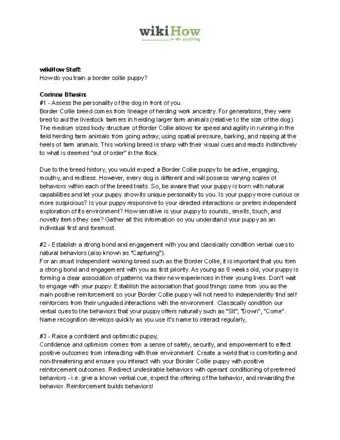
Thanks for reading our article! If you'd like to learn more about dog breed identification, check out our in-depth interview with Corinna Bhasin.
References
- ↑ http://www.yourpurebredpuppy.com/reviews/collies.html
- ↑ http://www.akc.org/dog-breeds/collie/
- ↑ http://www.akc.org/dog-breeds/collie/
- ↑ http://www.petmd.com/dog/breeds/c_dg_collie
- ↑ http://www.akc.org/dog-breeds/collie/
- ↑ http://www.petmd.com/dog/breeds/c_dg_collie
- ↑ http://www.chelsea-collies.com/information76.html
- ↑ http://www.chelsea-collies.com/information76.html
- ↑ http://www.chelsea-collies.com/information76.html
About This Article
To identify a collie, check for a medium-sized build. For example, adult male collies tend to be about 24-26 inches tall and weigh 55 to 90 pounds. Additionally, look for the collie’s long, distinctive head shape, which appears wedge-shaped or triangular when viewed from the front. You should also watch for a long body with a broad chest and muscular legs. To spot a rough collie, look for a long coat except on the head and legs. Smooth collies have short fur all over. Check the dog’s coat for common collie colors, such as a combination of tan, white, and black. For more advice from our Veterinarian co-author, including how to identify a collie based on personality traits, read on!
